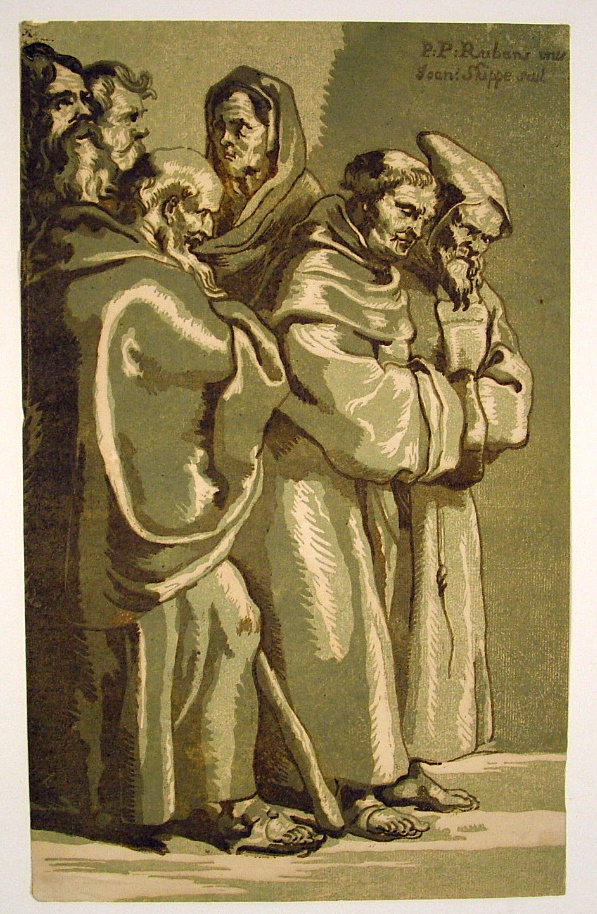A Group of Monks and a Woman (after Rubens)

John Skippe (1742-1811), A Group of Monks and a Woman (after Rubens ?), chiaroscuro woodcut, c. 1783. [with the inscription upper right: PP Rubens inv Joan:Skippe scul]. References: Le Blanc III 529, 13. On laid paper with a watermark Sitting Woman with Shield and Pitchfork (cf. Churchill 231, 234). In good condition, trimmed on or into the borderline, not laid down, some nicks on edges; 15 x 9 1/4 inches.
A fine impression, printed in four blocks (light and medium greyish green, light and dark brown).
Provenance: ex Collection Mr. and Mrs. Percy Simmons; also with the collector’s mark RE in a circle verso (not located in Lugt).
Exhibited: Beyond Black and White: Chiaroscuro Prints from Indiana Collections, Indiana University Art Museum (1989); Indianapolis Museum of Art (1990). Number 56 in the catalogue of the exhibition.
Skippe’s attribution to a drawing by Rubens in his own collection should be amended; the drawing is apparently based on the Rubens painting The Marriage of St. Catherine, with Many Saints, and focuses on a group of figures in the right lower corner of the painting.
Skippe was a “gentleman antiquarian” who traveled widely, collecting drawings which he later used as the basis for his chiaroscuro woodcuts. His intent was to replicate the Italian manner of Ugo da Carpi, and perhaps even encourage a re-birth of chiaroscuro woodcut printing. His prints were a success technically and aesthetically, but the re-birth of the medium was not forthcoming. Skippe was not focused on the commercial possibilities of the medium, sharing his prints only with appreciative connoisseurs and colleagues. He created a number of folios of prints; the number is unknown but they are rare, and were of varying sizes. In the United States there are two folios at the Yale Center for British Art (one of 31 prints, the other containing 20); another folio of 42 is at the Cincinnati Museum of Art, and finally a folio of 28 is at the University of Chicago. The small number of prints distributed by Skippe, and his avoidance of any commercial publication, have resulted in a paucity of Skippe prints appearing on the market; and today they are rarely seen or even known except by specialists or connoisseurs.